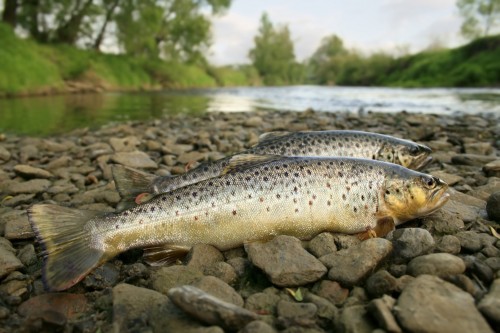The End of the Line

Narration: Ted Danson
By Robert Patrick
You remember that lovable old seadog that hunkered over a waterlogged wheel? The one with the banana-yellow raincoat and the fluffy white beard? Well, if you’re thinking of the Gorton fisherman from the product line that shares the same name, you would be correct. When I was growing up, watching Family Ties or some other inconsequential sitcom, these commercials would blip onto the screen, showing square boxes with crunchy, delectable fish sticks! Gorton, giving his comforting maxim to the audience, told us to “trust” him; this while he was dunked by incoming waves – he may have been a good pitchman, but he was a terrible captain. Nevertheless, the fishing industry, according to the new documentary “The End of the Line”, is anything but trustworthy. Director Rupert Murray, who helms the insightful look at the state of our oceans, presents a timely dissection of what is going on with fish. Nobody is really cracking open a can of Starkist, wondering where their tuna came from, says one of the experts in the film. And while I cant logically assume this will change anytime soon – sorry, but people at Subway just want their five dollar foot long, not an expose on the coordinates of where their food was caught – the documentary provides many astonishing, frightening looks into the over fishing of our seas.
The documentary purports that, assuming we will be fishing at the gluttonous ratio we are now, there will be no more fish in the ocean by the year 2048. The duel of man versus fish, ready to be scored by Ennio Morricone, is not, in fact, much of a contest, the analysts in the film say. The scary, foreboding thoughts of a global deficiency in seafood is met by horrifying images of tuna being impaled by the huge hooks of fishermen. After watching the flesh of a tuna writhe aboard a ship, getting pummeled by sharp objects in their final convulses of defeat, it makes you feel uneasy: This is how the tuna mix that my family made originally started out? Fish being maimed by dudes that look like Antonio Bandaras? But the images in the documentary, though showing plenty of bloody carnage, have some beautiful redeeming qualities. Of course the dichotomy of harmonious ocean life being met by the savage hands of man is supposed to be our humble pie; the thing that humanity is supposed to feel horrible over. And we should. But the reveries of color in the ocean, being tethered together by schools of carefree fish, looks gorgeous on its own right.
Much like “Food, Inc.“, another documentary that opened earlier this year, “The End of the Line” raises a cornucopia of questions about the path that mankind is taking with the planet – only this film doesn’t have a contrived Bruce Springsteen song wrapping the bow during the credits of this particular film. From a spectator’s standpoint, Murray’s film isn’t technically sophisticated by any means, but for audiences who are Discovery Channel fanatics, they may want to pop some quarters into the teller’s window and learn about how the earth needs to be helped – this also goes for pious people who believe that they are infallible and like to hate others for the failings of humanity, et al.
And, not to be outdone by other documentaries in the same vein, “The End of the Line” supplies enough moving pie charts and bar graphs to keep a PowerPoint aficionado thrilled for weeks to come. Unfortunately for the film, the whole thing gets a little repetitious, even at eighty-two minutes, and seems to reiterate itself several times; much like an angry parent or a short tempered nun. The saving grace, despite my incessant jesting of the production itself, is that the film crew is getting the message out that we are eating too much fish to keep the population bolstering. The alarming statistics, along with the inflamed anger of some of the professors, keep you shocked enough to warrant a ticket sale.
Go ahead, watch it if you’re near the Ken Cinema, meanwhile I’d like to mention that the folks at Gorton fish sticks just introduced new resealable bags on their website!
3/5
